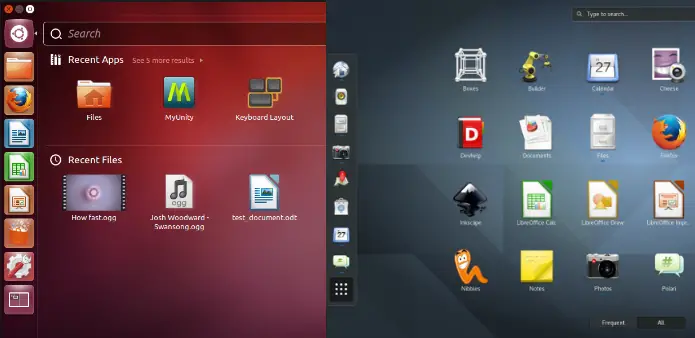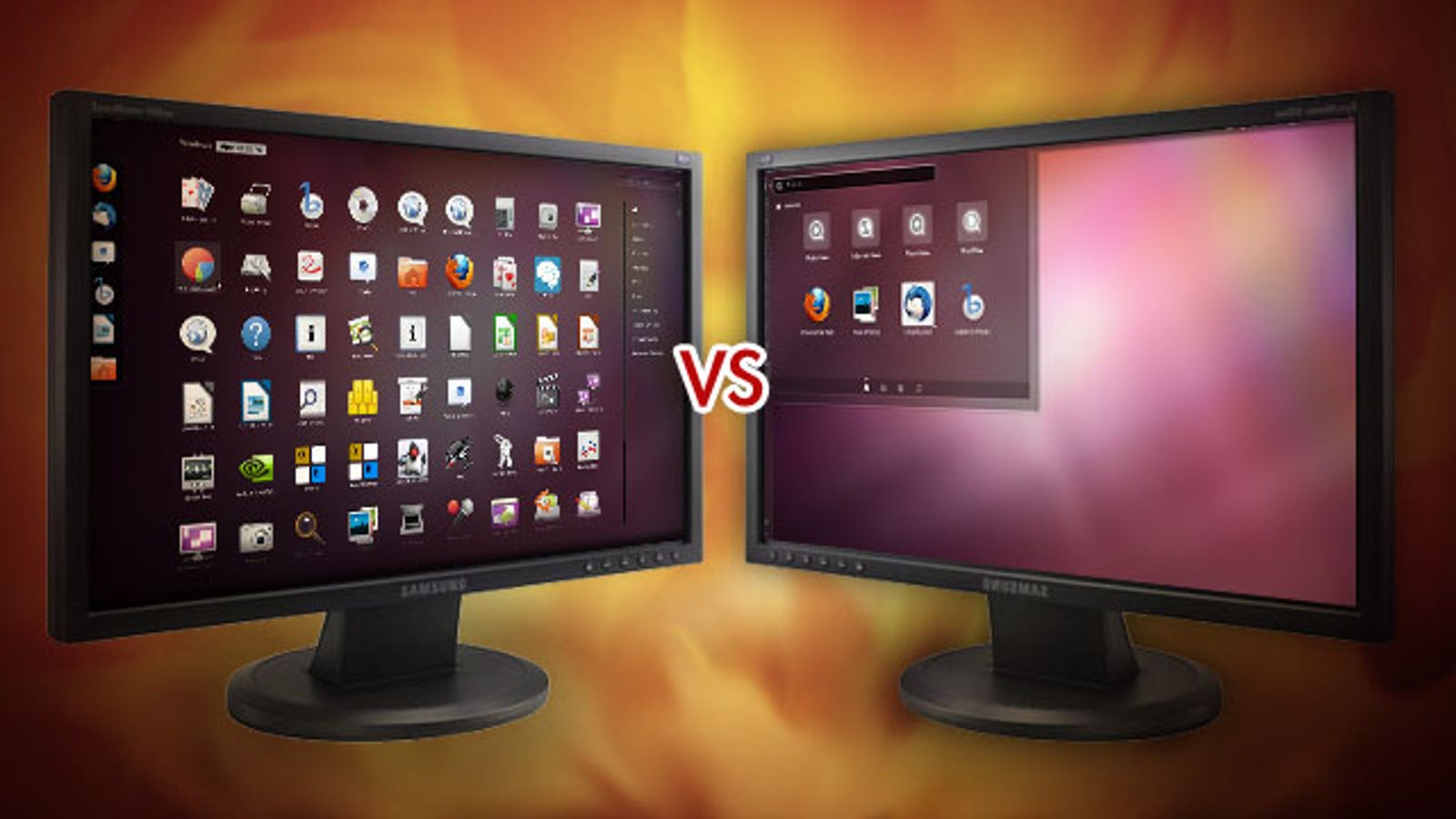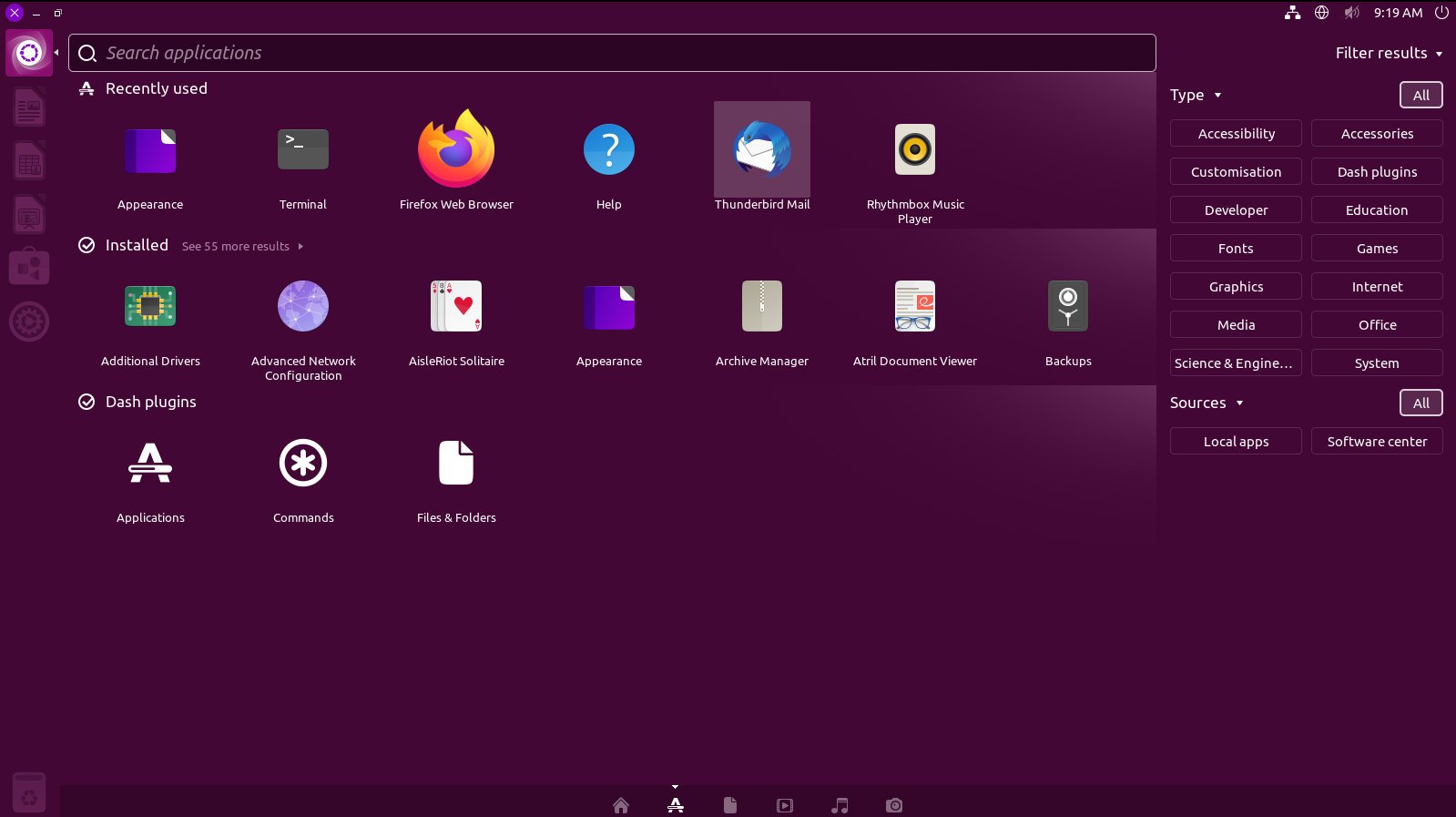Ubuntu GNOME vs. Ubuntu Unity: The Desktop Environment Debate

The choice between Ubuntu GNOME and Ubuntu Unity often boils down to personal preferences and the specific needs of the user. While Unity is arguably more visually appealing and user-friendly for beginners, GNOME is considered more versatile, customizable, and efficient for power users and those familiar with Linux.

1. User Interface and Design:

– Ubuntu Unity:
- Unity’s interface features a prominent top-placed panel with a global menu and a side-mounted launcher.
- The overall design is sleek, minimalist, and visually appealing.
- Unity places an emphasis on simplicity and ease of use, making it ideal for users new to Linux.
– Ubuntu GNOME:
- GNOME’s interface is characterized by a traditional desktop layout with a taskbar at the bottom or top of the screen.
- The GNOME Shell provides a clean, organized workspace with a focus on productivity and functionality.
- It offers a wide range of customization options, including the ability to install various themes, extensions, and applets to enhance its appearance and functionality.
2. Features and Functionality:
– Ubuntu Unity:
- Unity integrates several features designed to streamline the user experience, such as Dash, HUD, and Lenses.
- Dash is a centralized search tool that allows users to quickly find and launch applications, files, and settings.
- HUD (Heads Up Display) provides contextual information about the application currently in focus.
- Lenses let users search and filter specific types of content and information, such as music, videos, or software packages.
– Ubuntu GNOME:
- GNOME provides a wide range of features focused on productivity and multitasking, including Activities Overview, Workspaces, and Extensions.
- Activities Overview is a comprehensive dashboard that displays all open windows, workspaces, and applications.
- Workspaces allow users to create multiple virtual desktops to organize their tasks and applications.
- Extensions add additional functionality to the GNOME Shell, allowing users to customize their desktop experience to their liking.
3. System Resource Usage:
– Ubuntu Unity:
- Unity is generally considered to be more lightweight and resource-efficient compared to GNOME.
- It has a smaller memory footprint and consumes fewer system resources, making it suitable for older or resource-constrained machines.
– Ubuntu GNOME:
- GNOME has a more modern and feature-rich interface, which can result in slightly higher system resource usage.
- However, GNOME provides fine-grained control over various aspects of its interface, allowing users to optimize resource usage by disabling unnecessary visual effects or animations.
4. Software and Application Support:
– Ubuntu Unity:
- Unity comes pre-installed with a curated selection of applications tailored to the desktop environment’s design.
- It supports a wide range of software and applications, including both GNOME and KDE applications.
– Ubuntu GNOME:
- GNOME is an open and flexible platform that supports a vast array of software and applications.
- It has a comprehensive software center that provides easy access to a wide variety of applications and tools.
5. Community and Support:
– Ubuntu Unity:
- Unity has a dedicated community and support team that provides documentation, tutorials, and assistance to users.
- While Unity is no longer actively developed, there are still resources and support available for users who prefer it.
– Ubuntu GNOME:
- GNOME has a large and active community of developers, contributors, and users.
- Extensive documentation, tutorials, forums, and support resources are available to help users troubleshoot any issues or customize their GNOME desktop experience.
Ultimately, the choice between Ubuntu GNOME and Ubuntu Unity comes down to the user’s individual preferences and requirements. Unity is a more focused and user-friendly experience, while GNOME offers greater flexibility, customization, and extensibility. Both provide a solid foundation for a productive and enjoyable desktop environment in the Ubuntu ecosystem.

Thanks for the detailed comparison! I’ve been using Ubuntu Unity for a while now and I’m pretty happy with it. But I’m always open to trying new things, so I might give Ubuntu Gnome a try.
I’ve tried both Ubuntu Gnome and Ubuntu Unity, and I have to say that I prefer Unity. I find it to be more user-friendly and efficient.
Ubuntu Gnome is a great choice for users who want a more traditional desktop experience. It’s also a good option for users who want to customize their desktop to their liking.
I think you’re oversimplifying the issue. There are pros and cons to both Ubuntu Gnome and Ubuntu Unity. It really depends on what the individual user is looking for.
I find it funny that you’re comparing Ubuntu Gnome to Ubuntu Unity. They’re both great desktop environments, but they’re also very different.
Well, I guess it all comes down to personal preference. I personally prefer Ubuntu Gnome, but I can see why some people might prefer Ubuntu Unity.
I’ve been using Ubuntu for years, and I’ve never had any problems with it. I think it’s a great operating system.
I’m not sure what the big deal is. I’ve used both Ubuntu Gnome and Ubuntu Unity, and I haven’t noticed much of a difference.
I’ve been using Ubuntu Gnome for a while now and I’m really happy with it. It’s fast, efficient, and customizable.
I’ve tried both Ubuntu Gnome and Ubuntu Unity, and I have to say that I prefer Unity. I find it to be more user-friendly and efficient.
I think you’re oversimplifying the issue. There are pros and cons to both Ubuntu Gnome and Ubuntu Unity. It really depends on what the individual user is looking for.
I find it funny that you’re comparing Ubuntu Gnome to Ubuntu Unity. They’re both great desktop environments, but they’re also very different.